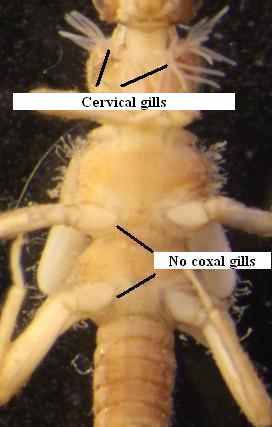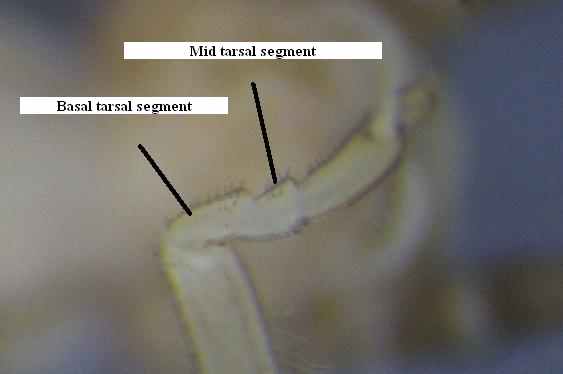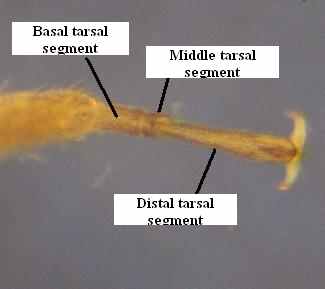This family (Nemouridae) has 5 genera and 9 species. Some species are fairly widespread in Ohio. This family is distinguished by being small and with wingpads swept out at a 45 degree angle. They can be confused with the Willowfly stoneflies, which also have swept out wingpads. There are several distinguishing features to separate the two families. Forestflies are generally collected in May or June, Willowflies in December-February. One genus (Amphenemura) of Forestfly has branched gills in the neck region, but none in the thorax (see Figure 1), but other Forestfly genera do not have neck gills.
To really distinguish the Forestflies, break out your magnifying glass and look at the legs. The legs consist of the femur, the tibia and the tarsus. The first two are closest to the body. There are three segments of the tarsus. In Forestflies the first two (counting outwards from the body) are different in size; the second being very small and wedge-like. Indeed, the second segment is sometimes so small that it looks like the tarsus only has two segments (see Figure 2). In contrast, for the Willowflies, the first two tarsal segments are about equal in size (Figure 3).
Amphenemura delosa (nymph)
.jpg)
Fig. 1. No thorasic gills

Fig. 3. Willowfly tarsal segments

[Home]; [Back to Nymph Families]
